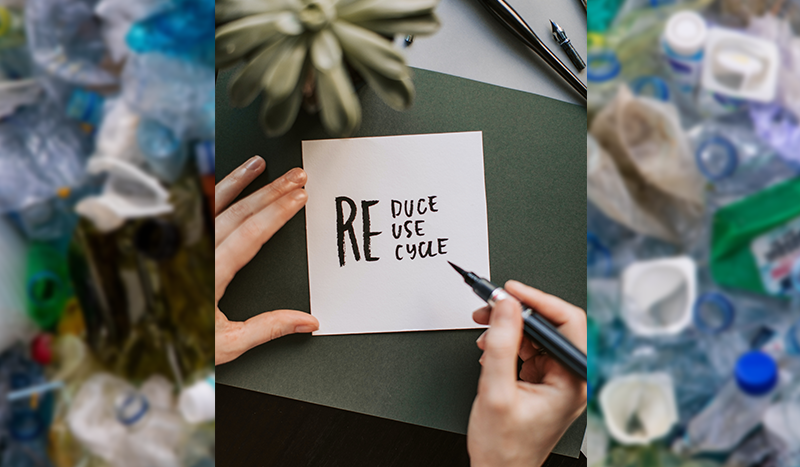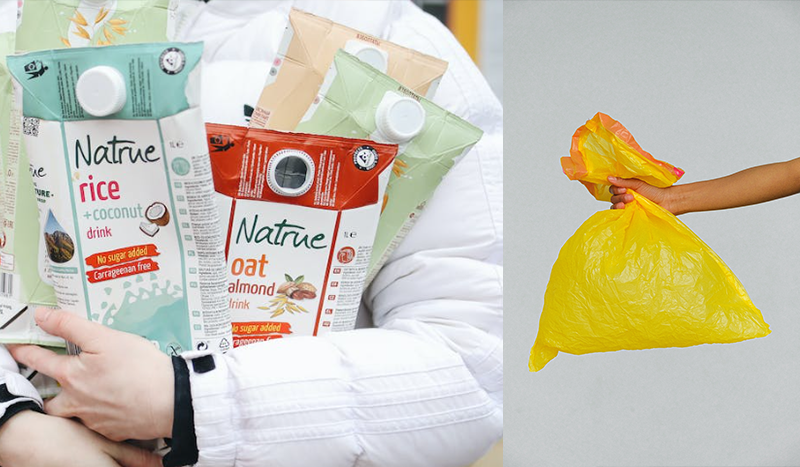How to Get Started With Zero-Waste Living

©️ Magda Ehlers, Vlada Karpovich / Pexels
With the recent emergence of fast fashion and fast consumption, the concept of zero-waste living is a necessary discussion to make. This lifestyle empowers people to rethink their daily choices and a commitment to a planet-friendly existence. Zero-waste living is not just about reducing trash. It has also to do with the mindset regarding our ecological footprint and what we plan to leave behind for other generations.
So, how can you help and become part of the movement?
What Is Zero-Waste Living?
The zero-waste movement is a sustainable lifestyle focused on minimizing daily waste production and reducing landfill contributions. Its core goal is to limit waste sent to landfills as much as possible, although achieving absolute zero waste is impractical. Key strategies involve prioritizing recycling and reusing over disposable items, which not only lessens landfill burdens but also addresses climate change and global warming concerns.
Transitioning to a zero-waste lifestyle presents challenges as it necessitates unlearning wasteful habits and embracing mindful consumption. Many individuals find support and guidance from like-minded community members pursuing the same goal. By taking small, incremental steps such as initiating composting, recycling, and repurposing household items instead of relying on single-use products, you can embark on your journey towards a zero-waste lifestyle.
Brief History Lesson on Zero Waste
Although Bea Johnson is recognized as a pioneer in the zero-waste movement, the origins of this concept can be traced back to Paul Palmer. Palmer was a chemist who founded Zero Waste Systems (ZWS) in 1973. His motivation stemmed from discovering that electronics companies in Silicon Valley were wasting substantial quantities of perfectly usable industrial chemicals.
In 2008, the term “Zero Waste” was primarily associated with manufacturing and municipal waste management practices. It was Bea Johnson who, in a household of four, decided to adopt this concept, effectively pioneering the modern zero-waste movement as it is known today. Bea Johnson’s commitment to zero waste in her personal life significantly contributed to popularizing and expanding the movement’s reach.
The Landfill Issue
Contrary to popular belief, a landfill is not akin to a giant compost pile. In reality, landfills are vast repositories for a diverse range of waste materials, from food scraps to hazardous items like light bulbs, plastic, and paper – virtually anything we discard.
As more waste is dumped onto these landfill sites, it accumulates and covers up everything underneath it, effectively sealing off oxygen and sunlight. This burial process inhibits the natural decomposition of waste, resulting in items found in pristine condition from as far back as the 1940s, indicating a lack of breakdown over time.
Why Should You Start Zero-Waste Living?
Embarking on a zero-waste lifestyle can be immensely rewarding and beneficial, both for individuals and the planet. Here are some reasons why you should consider starting zero-waste living:
- Environmental Impact: By reducing waste and minimizing your contributions to landfills, you directly lessen the environmental damage associated with waste disposal. This includes reduced methane emissions (a potent greenhouse gas) from landfills, which helps combat climate change.
- Resource Conservation: Zero waste living encourages efficient use of resources, including water, energy, and raw materials. This helps conserve finite resources, lessening the strain on ecosystems, and mitigating resource depletion.
- Cost Savings: Adopting a zero-waste lifestyle often leads to financial benefits. By buying fewer disposable products and opting for reusable alternatives, you can save money in the long run.

- Reduced Pollution: Less waste means fewer pollutants entering the environment, which can harm ecosystems, waterways, and wildlife. This leads to cleaner air, water, and a healthier planet.
- Personal Well-being: Zero-waste living often involves healthier choices, such as consuming fresh, locally sourced foods, reducing exposure to harmful chemicals, and fostering a mindful and less cluttered living space. This can have positive effects on your overall well-being.
- Reducing Landfill Waste: One of the primary goals of a zero-waste lifestyle is to reduce the amount of waste that ends up in landfills. Landfills are not only unsightly but also emit harmful greenhouse gases like methane, which significantly contribute to climate change and global warming. By diverting waste from landfills, we help mitigate these environmental impacts.
- Promoting Sustainability: A zero-waste lifestyle promotes sustainability by encouraging responsible consumption and resource management. It emphasizes the importance of using resources efficiently and ensuring that they are available for future generations.
- Biodiversity Conservation: Sustainable living practices associated with zero waste can have a positive impact on biodiversity. Reduced waste means less pollution, which can harm ecosystems and wildlife. By minimizing waste and pollution, we support the health and diversity of plant and animal species.
- Balanced Ecosystems: A zero-waste lifestyle contributes to maintaining a healthy and productive balance of organisms in ecosystems. Excessive waste and pollution disrupt ecosystems, leading to imbalances that can have far-reaching consequences. By reducing waste, we can help protect and restore these delicate balances.
- Extending Material Lifespan: Many items we dispose of prematurely can often be reused, repaired, or repurposed, extending their lifespan. This not only reduces waste but also conserves the resources and energy required to manufacture new products.
- Conserving Finite Resources: Zero waste practices reduce the need for extracting and processing finite resources, such as minerals and fossil fuels, which are essential for the production of goods. Conserving these resources helps to reduce the ecological footprint associated with their extraction.
- Lessening Carbon Emissions: The production and disposal of products generate carbon emissions. By reducing waste and opting for reusable and sustainable alternatives, we can lower the carbon footprint associated with our consumption habits, contributing to efforts to combat climate change.
How to Get Started With Zero-Waste Living?
Here are the 5 R’s of zero waste living, which build upon the original 3 R’s (reduce, reuse, recycle) and provide a comprehensive approach to sustainability:
1. Refuse
This is the first and most important step. Say no to single-use plastics and unnecessary items. Decline plastic straws, disposable utensils, and shopping bags. Be mindful of freebies and promotional materials you don’t need. Start by saying no to items you do not truly need, such as single-use plastic, disposable coffee cups, and plastic produce bags. Refusing unnecessary items is the first step in reducing waste at its source.
2. Reduce
Reduce waste by donating items you no longer need or by being mindful of your purchases. Buy fewer items, particularly clothing, and consider alternatives to plastic, such as glass or metal, which have longer lifespans. You can also try shopping in thrift stores and creating a capsule wardrobe for a more sustainable option. Consider the quality and longevity of items before purchasing them. Plan your meals to minimize food waste. Use a reusable water bottle, coffee cup, and shopping bags.
3. Reuse
Instead of discarding items, find ways to reuse, upcycle, or repurpose them. Embrace second-hand shopping to give old items a new lease on life. For example, repurpose glass jars for storing food instead of buying new containers. Try to invest in reusable containers, bags, and cloth napkins. Repair items instead of replacing them when possible.
4. Recycle
Recycling comes after refusing, reducing, and reusing because it should be a last resort. Learn your local recycling guidelines and follow them closely. Be aware that not all items are recyclable, and improper recycling can lead to contamination. Reduce your reliance on items that are difficult to recycle. Another thing to consider is choosing products with minimal packaging or packaging made from recyclable materials. Support brands that use eco-friendly and recyclable packaging.
5. Rot
Composting your household waste is a crucial step in reducing waste sent to landfills. Organic waste, like food scraps and yard trimmings, can be turned into nutrient-rich compost, enriching soil and reducing landfill waste. You can also use rechargeable batteries to reduce waste and save money. There are several composting methods, including backyard composting, vermicomposting (with worms), and municipal composting programs. Select the one that suits your space and lifestyle.
Have you embarked on your own-waste living journey? Do you have innovative tips, personal experiences, or questions to share? How would you envision a future where waste reduction is a collective priority? We would love to hear your thoughts in the comment section below!



